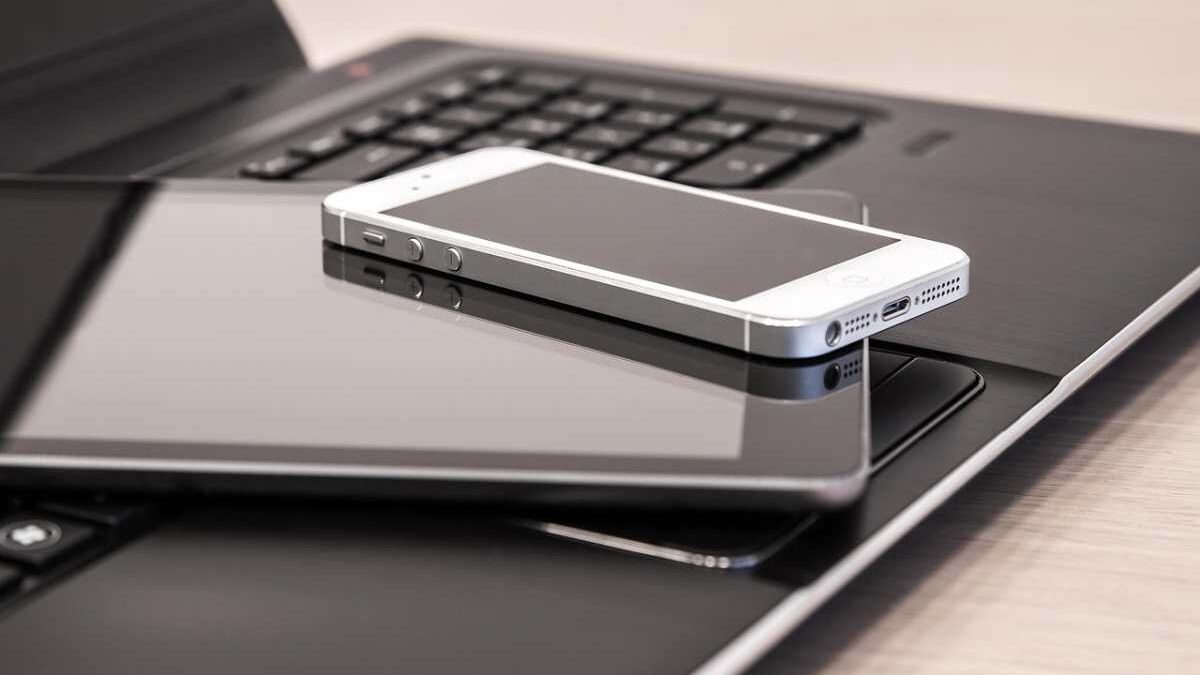Remember the first time you tried editing a document on your phone. Maybe you tapped the wrong button, bolded the wrong word, couldn’t place the cursor properly, or just gave up and waited to use your laptop.
You’re definitely not the only one.
Even though most people browse the internet on their phones now, HTML WYSIWYG editors, the rich-text editors used in CMS platforms, email apps, and website builders, still don’t work well on small screens.
Even in 2025, mobile editing feels incomplete and not truly designed for phone users.
In this article, we’ll explore why mobile-first design changed how text editors work, how HTML WYSIWYG tools have tried to adapt, and what developers should know when creating editors that actually work well on phones.
Table of Contents
ToggleKey Takeaways
- Mobile screens need simplified toolbars and buttons designed for touch.
- Touch gestures often clash with normal text selection and formatting.
- The mobile keyboard takes up about half the screen, leaving little space to edit.
- Mobile-friendly editors must be designed differently, not just shrunk versions of desktop editors.
- Mobile devices need lighter, faster code because they can’t handle heavy JavaScript like desktops.
To understand why mobile editing feels so limited today, it helps to look back at how these editors were originally built.
The Desktop Era: When Editors Had Plenty of Space
Traditional HTML WYSIWYG editors were designed for desktop computers with large screens, a mouse for accurate clicks, and a full keyboard. Editors like TinyMCE and CKEditor included:
- Comprehensive toolbars with 20+ buttons.
- Dropdown menus for font selection.
- Multi-level formatting options.
- Drag-and-drop image placement.
- Right-click context menus.
All of this worked great on desktops, until we tried fitting the same features onto a tiny 6-inch phone screen.
The Mobile Challenge: Three Problems That Changed Everything
Mobile screens brought challenges that desktop editors were never built for. These three problems completely changed how WYSIWYG editors needed to work.
1. The Touch Problem
Your finger is about 44 pixels wide. That’s about the size of 8-10 tiny toolbar buttons on a traditional editor.
According to Apple’s Human Interface Guidelines, touch targets should be at least 44×44 pixels for comfortable tapping.
Suddenly, those toolbars became unusable.
2. The Keyboard Problem
When the mobile keyboard pops up, it covers nearly half the screen. That leaves very little room to see or edit your content. Editing a paragraph while only seeing two lines is annoying and slows everything down.
3. The Cursor Problem
Trying to place your cursor between two words with your finger is tricky. Selecting just a few words is even harder. The precise control you get with a mouse simply doesn’t exist on mobile.
These challenges forced editor developers to rethink their entire approach.
How HTML WYSIWYG Editors Adapted
Editors didn’t become mobile-friendly overnight. They changed step by step, and many are still improving.
Phase 1: Responsive Layouts
At first, developers just made the desktop toolbar smaller or stacked buttons vertically. It technically “fit” on mobile, but it was still almost impossible to use.
Bad Example:
| <!– Not ideal: Just shrinking the desktop toolbar –> <div class=“editor-toolbar” style=“font-size: 10px;”> <button>Bold</button> <button>Italic</button> <button>Underline</button> <!– 20 more tiny buttons… –> </div> |
Phase 2: Simplified Mobile Toolbars
Editors then started showing only the most important options, like bold, italic, and links. More advanced tools were moved into a menu.
Better Approach:
| <!– Mobile-first: Show only key actions –> <div class=“editor-toolbar-mobile”> <button class=“btn-lg” aria-label=“Bold”> <strong>B</strong> </button> <button class=“btn-lg” aria-label=“Italic”> <em>I</em> </button> <button class=“btn-lg” aria-label=“Insert Link”> 🔗 </button> <button class=“btn-lg” aria-label=“More options”> ⋯ </button> </div> <style> .btn-lg { min-width: 44px; min-height: 44px; font-size: 18px; } </style> |
Phase 3: Touch-Optimised Interactions
Modern HTML WYSIWYG editors now support touch gestures and adjust their UI for mobile automatically. Some tools, like Froala, detect when you’re on a phone and switch to a more touch-friendly mode.
Now that we’ve seen how editors evolved, let’s look at how to actually implement a mobile-friendly editing experience today.
Building a Mobile-Friendly Editor
Here’s a simple example of how you can set up a mobile-friendly HTML WYSIWYG editor. I’m using Froala for this example, but the same idea works with most editors.
| <!DOCTYPE html> <html lang=“en”> <head> <meta charset=“UTF-8” /> <meta name=“viewport” content=“width=device-width, initial-scale=1.0” /> <title>Mobile-Friendly Editor</title> <!– Froala CSS –> <link href=“<https://cdn.jsdelivr.net/npm/froala-editor@latest/css/froala_editor.pkgd.min.css>” rel=“stylesheet” /> </head> <body> <!– Editor container –> <div id=“editor”></div> <!– Froala JS –> <script src=“<https://cdn.jsdelivr.net/npm/froala-editor@latest/js/froala_editor.pkgd.min.js>”></script> <script> // Initialise Froala Editor new FroalaEditor(“#editor”, { // Desktop / Normal toolbar layout toolbarButtons: { // Text styling options text: { buttons: [“bold”, “italic”, “underline”, “color”], visible: 3, // Show only 3 buttons before collapsing into “more” }, paragraph: { // Paragraph formatting options buttons: [“align”, “list”, “indent”], visible: 3, }, insert: { // Insert elements (links, images, tables…) buttons: [“link”, “image”, “table”], visible: 3, }, actions: { // Undo / redo / fullscreen buttons: [“undo”, “redo”, “fullscreen”], align: “right”, // Right-align this group visible: 2, }, }, // Extra-small screens (mobile) toolbarButtonsXS: { text: { buttons: [“bold”, “italic”], visible: 2, }, paragraph: { buttons: [“align”, “list”], visible: 2, }, insert: { buttons: [“link”, “image”], visible: 2, }, actions: { buttons: [“undo”, “redo”], align: “right”, visible: 2, }, }, }); </script> </body> </html> |
What this code does:
- Loads Froala’s CSS and JavaScript files from a CDN.
- Creates a clean WYSIWYG editor inside #editor.
- Group toolbar buttons into sections like Text, Paragraph, Insert, and Actions.
- Limits how many buttons are visible; extra tools collapse into a “more” menu.
- Shows a full toolbar on desktop, but a simpler, smaller toolbar on mobile.
- Uses toolbarButtonsXS to customise button sets for extra-small screens.
- Improves mobile usability by reducing clutter and keeping only essential tools.
- Aligns certain toolbar groups (like undo/redo) to the right for a cleaner layout.
Of course, code alone isn’t enough. Great mobile editing also depends on following good UX principles.
Best Practices for Mobile HTML WYSIWYG Editors
Here are some simple tips to make your editor easier to use on phones.
These tips also align with mobile UX principles described in the W3C Mobile Web Best Practices.
- Prioritise Core Features
- Show only the basics like bold, italic, links, and undo/redo.
- Move advanced tools into a “More” menu.
- Use Large Touch Targets
- Make every button at least 44×44 px.
- Keep at least 8px space between buttons so users don’t tap the wrong one.
- Optimise for One-Handed Use
- Put common actions near the bottom of the screen.
- Design with thumb-friendly zones in mind, especially on big phones.
- Test with Real On-Screen Keyboards
- Check how the editor behaves when the keyboard pops up.
- Make sure the text area stays visible and usable.
- Lazy Load Heavy Features
- Load advanced tools only when needed so the editor starts faster on mobile.
Even with best practices in place, there are still common issues that can break the mobile editing experience.
Common Pitfalls
Mobile editors often run into problems that make writing or formatting text frustrating. These are the issues you need to watch out for.
- Toolbar Overlapping Content
A fixed toolbar can cover the text, making it hard for users to see what they’re typing. - Selection Issues on Touch
- Selecting text with a finger is often inaccurate.
- Many modern editors fix this with selection handles; add them if you’re building your own.
- Slow Performance
Editors can become slow or laggy on older devices, especially if they load too many features at once.
These problems aren’t just mistakes; they show why mobile editing is still far behind desktop editing.
Why Mobile Editing Still Feels Like an Afterthought in 2025
Despite years of mobile-first design, editing rich content on a phone is still difficult. Here’s why:
- Desktop Legacy Code
- Many HTML WYSIWYG editors were built 10-15 years ago.
- Adding mobile support to old systems is much harder than starting fresh.
- Too Many Features
- Users want desktop-style tools like tables, image editing, and HTML view.
- Fitting all of this onto a small screen quickly becomes cluttered.
- Performance Limits
- Rich text editors rely on heavy JavaScript.
- Mobile devices and slower networks struggle to keep everything smooth.
- Testing Challenges
- There are thousands of phone, browser, and OS combinations.
- Keyboards behave differently on Android and iOS, which causes weird bugs.
- Business Priorities
- Most content creation still happens on desktop.
- Companies treat mobile editing as optional instead of essential.
Conclusion
Mobile-first design has completely changed what we expect from HTML WYSIWYG editors. The old desktop idea of “more buttons = better” simply doesn’t work on a small phone screen where you tap with your finger instead of a mouse.
The editors who work well on mobile follow a few key ideas:
- Keep things simple instead of showing every feature.
- Touch interactions are different from clicking with a mouse.
- Mobile devices need faster, lighter performance.
- Interfaces should adapt to the user’s screen and context.
Whether you’re building a blog tool, CMS, or email editor, choosing a mobile-friendly HTML WYSIWYG editor is no longer optional; it’s required. Editors that were designed with mobile in mind (rather than adapted later) will provide better experiences for your users.
Remember: If users can’t edit comfortably on their phones, they’ll wait until they get to a computer or switch to a competitor that handles mobile better.
About the Author
Shefali Jangid is a web developer, technical writer, and content creator with a love for building intuitive tools and resources for developers.
She writes about web development, shares practical coding tips on her blog shefali.dev, and creates projects that make developers’ lives easier.
How Mobile-First Design Changed the Rules for Text Editing Interfaces
Shashi Teja
Related posts
Hot Topics
How Mobile-First Design Changed the Rules for Text Editing Interfaces
Remember the first time you tried editing a document on your phone. Maybe you tapped the wrong button, bolded the…
What Makes Data Center Solutions Scalable, Secure, and Future-ready?
The demand for efficient data management and uninterrupted connectivity has never been greater. Businesses across industries rely on data centers…



